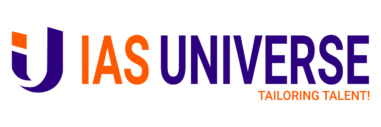Introduction
Psychology tells us that emotions drive our behavior, while logic only justifies our actions after the fact. Marketing confirms this theory. Humans associate the same personality traits with brands as they do with people — choosing your favorite brand is like choosing your best friend or significant other. We go with the option that makes us feel something.
But emotions can cloud your reasoning, especially when you need to do something that could cause internal pain, like giving constructive criticism, or when you need to move on from something you’re attached to, like scrapping a favorite topic from your team’s content mix.
There’s a way to overcome this emotional bias. It is through digital technology. Digital Technology helps you make logically sound decisions even in situations with major ramifications.
Digital technologies can act as a reliable source of input for rational decision
- Verify and define your problem: After analyzing the traffic report of an area, we now know if the traffic has plateaued for the past year or the rate of increase of traffic month on month. This specificity in defining the problem helps bring problem-specific solutions.
- Choose the best solution and test it: Based on the evaluation of your potential solutions, choose the best one and test it. Example: Technology simulation of Environment Impact Assessment helps find the best solutions among many options that least impacts the environment.
- Data Collection through Digital Technologies: Technologies have made the collection easier. Example: BharatPe (Financial information), Aadhar (Demographic Information), NFHS etc.
- Predictability through Technologies: Big data analysis can predict future progression of an event like climate change, Covid-19 outbreak etc. This gives a warning for making rational decisions and course corrections.
- Business Intelligence: A term coined by a Gartner Group consultant in the late 1980s, it describes a technology-driven process that leverages various software solutions and services to transform data into actionable information and helps decision makers understand the current state of their company.
- AI and machine learning technology: Today the world’s biggest and most innovative companies like Google, Amazon and Facebook are already using AI-powered algorithms as part of their decision-making process. And evidence seems to suggest that over the coming years the role of the AI-based systems in making real-world decisions will only keep getting bigger. Example: AI-led hedge funds outperformed their human counterparts with annual returns
However, digital technologies may not act as reliable source of input for rational decision making as shown below:
- Digital Divide: the gap between demographics and regions that have access to modern information and communications technology (ICT), and those that don’t or have restricted access is very high in India. This leads to Digital Exclusion of the have nots. Example: Low Digital literacy in Rural India
- Misinformation and Deep Fakes: Digital technologies have resulted in targeted messages changing the attitude of recipients and manipulating them. Example: Election Campaigns
- Bounded Rationality: People act in accordance with their own perception of the situation. So even when all information is available people may not act rationally.
- The Need for Emotions in decision making: Decisions based purely on facts and numbers may lead to mechanical rationality which leads to the violation of principles of compassion and fairness.
Conclusion:
There should be adequate redressal of the ethical issues that are closely connected to digital technology, that is trust, knowledge, privacy, and individual autonomy. Thus the adoption of the technology must be done with a lot of responsibility, rationality and also equality.
